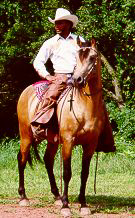New York.....They Built the Wall
companion video - Dr. Leonard Jeffries of the City College of New York
companion photos
 Systematic use of black slaves in New Netherland began in 1626, when the first cargo of 11 Africans was unloaded by the Dutch West India Company. The company was founded in 1621.
Systematic use of black slaves in New Netherland began in 1626, when the first cargo of 11 Africans was unloaded by the Dutch West India Company. The company was founded in 1621.
The British took over in 1664. And, whereas the Dutch had used slavery as part of their colonial policy, the British used the colony as a market for slaves. The Duke's representatives in New York -- governors, councilors, and customs officials -- were instructed to promote the importation of slaves by every possible means.
Officially, from 1701 to 1726 some 1,570 slaves were imported from the West Indies and another 802 from Africa. The colony continued to import relatively few slaves from Africa directly, except occasional cargoes of children under 13.
Soon, New York had had the largest colonial slave population north of Maryland. From about 2,000 in 1698, the number of the colony's black slaves swelled to more than 9,000 adults by 1746 and 13,000 by 1756. Between 1732 and 1754, black slaves accounted for more than 35 percent of the total immigration through the port of New York. And that doesn't count the many illegal cargoes of Africans unloaded all along the convoluted coast of Long Island to avoid the tariff duties on slaves. In 1756, slaves made up about 25 percent of the populations of Kings, Queens, Richmond, New York, and Westchester counties.
In New Amsterdam, slaves built Wall Street’s wall and cleared what became Harlem and Route 1. For much of the 17th and 18th centuries, New York boasted the largest urban slave population in mainland North America. The slave trade became a cornerstone of the New York economy.
After a few days of viewing the above information, we will continue our ride into history. Also, for daily updates and podcast on the AMAAP journey visit NJ.com and type in "Where is Miles Dean" in the search box.
We invite you to add comments on the content of this web site on our blog. In addition, we will post commentaries during this ride from guest writers as we proceed across the country.
 Again we say, "Welcome ... to the journey."
Again we say, "Welcome ... to the journey."